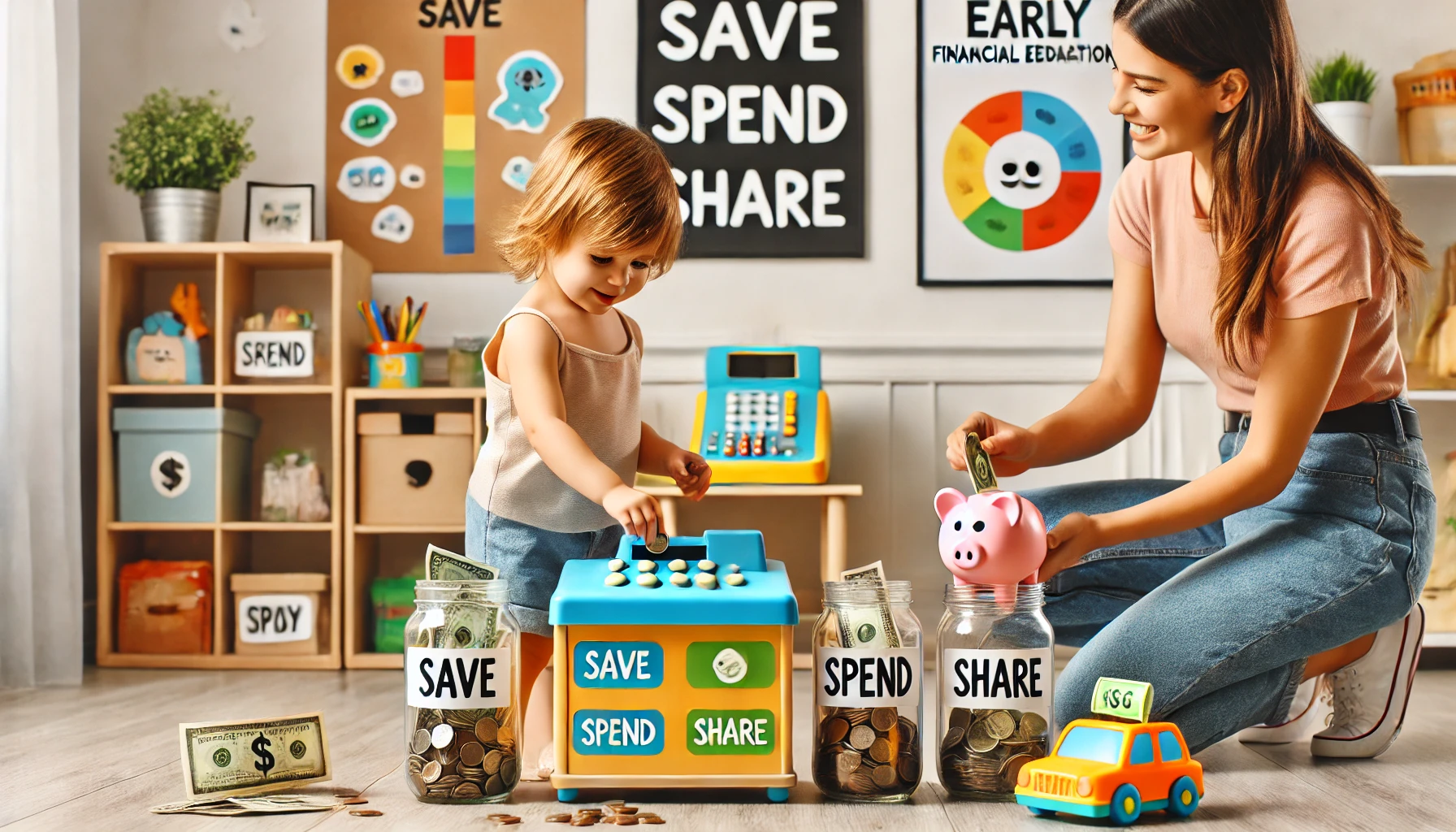Teaching young children about money helps them develop a healthy relationship with finances from an early age. When kids learn the value of money, how to make choices, and the importance of saving, they’re building a foundation for financial responsibility in the future. Through simple conversations, hands-on activities, and everyday examples, parents can guide children to understand the basics of earning, spending, and saving wisely.
Why Early Money Education Matters
- Builds financial awareness – Helps kids understand where money comes from and how it’s used.
- Encourages smart choices – Teaches decision-making based on priorities.
- Introduces saving habits – Helps children learn patience and goal-setting.
- Prepares for real-life scenarios – Builds confidence in handling money in the future.
- Promotes responsibility and independence – Teaches that money is a tool, not a toy.
1. Teach Where Money Comes From
Start by helping kids understand that money is earned, not just given.
Activity Idea:
- Explain: “People work jobs to earn money so they can pay for food, clothes, and homes.”
- Use pretend play (e.g., set up a play grocery store or restaurant) to show how money is exchanged for goods.
- Talk about what adults in their life do to earn money.
What Kids Learn:
- That money is connected to effort and work.
- How it’s used to meet needs and wants.
- The concept of earning before spending.
2. Introduce Coins and Bills Through Play
Getting familiar with physical money helps children understand its value.
Activity Idea:
- Let kids sort coins by size, shape, or color.
- Use a toy cash register to “buy” and “sell” household items.
- Create a matching game with prices and items (e.g., “The apple costs 2 coins”).
What Kids Learn:
- That different coins and bills have different values.
- Basic counting and comparison.
- The idea that money is used in everyday exchanges.
3. Teach the Difference Between Needs and Wants
Helping children recognize the difference is key to making smart financial choices.
Activity Idea:
- Use picture cards or toys and ask: “Is this something we need or want?”
- During shopping trips, discuss purchases: “We need milk, but candy is a want.”
- Sort household items into “need” and “want” boxes together.
What Kids Learn:
- That some items are essential, others are optional.
- How to think before making a choice.
- The importance of prioritizing needs first.
4. Introduce Saving with a Piggy Bank or Jars
Saving helps children learn patience and planning.
Activity Idea:
- Label three jars: Save, Spend, and Share.
- When kids receive money (allowance, birthday, etc.), guide them to divide it among the jars.
- Set a savings goal like buying a new toy and track progress together.
What Kids Learn:
- That money can be saved for something special.
- How small amounts add up over time.
- The reward of achieving a savings goal.
5. Give Opportunities to Make Small Spending Decisions
Letting children make choices with small amounts of money builds independence.
Activity Idea:
- Give your child a small budget at a store and allow them to choose how to spend it.
- Compare options: “This toy costs more, but this one leaves money to save.”
- Let them make mistakes and learn: if they spend all their money, they’ll need to wait to buy something else.
What Kids Learn:
- How to make thoughtful spending choices.
- That money is limited, and decisions matter.
- The importance of planning and budgeting.
6. Talk About Generosity and Giving
Teaching kids to share their money builds empathy and community values.
Activity Idea:
- Use the “Share” jar to collect money for a cause they care about (e.g., animal shelter, local library).
- Let them help choose how to donate—buying supplies, giving coins, or creating a care package.
- Talk about how giving helps others.
What Kids Learn:
- That money can be used to help people in need.
- The joy of giving to others.
- The balance between saving, spending, and sharing.
7. Set a Good Example With Your Own Spending Habits
Kids learn a lot by watching how adults handle money.
Activity Idea:
- Talk aloud about financial decisions: “I’m saving for a new car, so I’ll skip eating out this week.”
- Avoid impulse buying in front of them and explain why.
- Show them how you budget or save for big purchases.
What Kids Learn:
- That money decisions take thought and planning.
- How to delay gratification for something important.
- That adults use money responsibly and thoughtfully.
8. Celebrate Smart Money Choices
Positive reinforcement helps kids feel good about learning financial responsibility.
Activity Idea:
- Say: “You saved up and bought that toy yourself—great job!”
- Track progress toward goals with charts or stickers.
- Celebrate with a non-material reward (e.g., choosing a family movie night).
What Kids Learn:
- That effort and planning are worth it.
- The value of sticking to a goal.
- How to take pride in managing money well.
Final Thoughts
Teaching young children about money and smart spending gives them tools to navigate the world with confidence. By making money lessons hands-on, consistent, and fun, parents can prepare their kids for a lifetime of thoughtful financial decision-making and independence.
